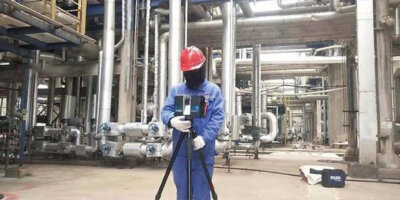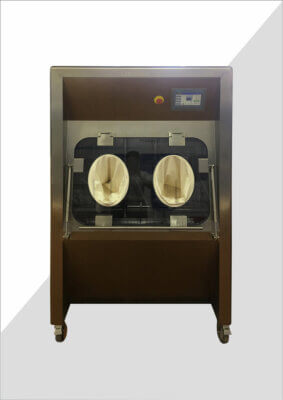Maintaining a healthy septic system is crucial for any homeowner, and one often overlooked component is the effluent filter. This vital piece of equipment prevents solids from entering your drainfield, but it requires regular cleaning to function effectively. In this comprehensive guide, we'll explore the importance of cleaning your septic tank effluent filter and provide step-by-step instructions to keep your system running smoothly.
A clean effluent filter is essential for the longevity and efficiency of your septic system. Regular maintenance can prevent costly repairs, avoid environmental contamination, and ensure your system operates at peak performance. We'll cover everything from identifying your filter to proper cleaning techniques and troubleshooting common issues. Whether you're a DIY enthusiast or simply want to understand the process better, this article will equip you with the knowledge to maintain your septic system like a pro.
As we dive into the intricacies of septic tank effluent filter maintenance, remember that proper care can significantly extend the life of your system and protect your property from potential health hazards. Let's explore how you can take charge of this critical aspect of home maintenance and ensure your septic system continues to function flawlessly for years to come.
"Regular cleaning of the septic tank effluent filter is crucial for preventing solids from entering the drainfield and causing system failure. A well-maintained filter can extend the life of your septic system by years."
| Cleaning Frequency | System Size | Household Size | Usage Level |
|---|---|---|---|
| Every 3-6 months | <1000 gal | 1-2 people | Light |
| Every 6-12 months | 1000-1500 gal | 3-4 people | Moderate |
| Annually | >1500 gal | 5+ people | Heavy |
Where is the effluent filter located in my septic tank?
The first step in cleaning your septic tank effluent filter is knowing where to find it. Typically, the filter is located at the outlet end of the septic tank, where wastewater exits to flow into the drainfield. This strategic placement allows the filter to catch any remaining solids before they can leave the tank and potentially clog your drainfield.
To locate your effluent filter, you'll need to identify the access ports or risers on your septic tank. These are usually circular concrete or plastic lids that protrude slightly from the ground. The outlet end of the tank, where the filter is housed, is generally the one farthest from your house.
When you open the access port, you should see a cylindrical or rectangular cartridge extending into the tank. This is your effluent filter. It's crucial to exercise caution when opening septic tank lids, as harmful gases can accumulate inside. Always ensure proper ventilation and never enter the tank itself.
"The effluent filter is typically located at the outlet end of the septic tank, accessible through the tank's access ports or risers. Proper identification of the filter's location is essential for effective maintenance and cleaning."
| Filter Type | Common Locations | Typical Dimensions |
|---|---|---|
| Cartridge | Outlet baffle | 4-18 inches long |
| Plate | Outlet pipe | 6-12 inches wide |
| Screen | Outlet tee | Varies by model |
What tools and safety equipment do I need for cleaning the filter?
Before you begin the cleaning process, it's essential to gather the right tools and safety equipment. This preparation will ensure that you can complete the task efficiently and safely. The basic tools required for cleaning your septic tank effluent filter are relatively simple and can usually be found in most households.
You'll need a garden hose with a spray nozzle for rinsing the filter, a large bucket or container to hold the dirty filter, and a long-handled brush or stick for removing any stubborn debris. For safety, rubber gloves, eye protection, and a face mask are non-negotiable. These items will protect you from harmful bacteria and unpleasant odors.
Additionally, consider having a rake or shovel on hand to clear any grass or soil from around the septic tank lid. A pry bar might be necessary to lift heavy concrete lids. It's also wise to have a partner present for safety reasons and to assist with the heavier aspects of the job.
"Proper safety equipment, including rubber gloves, eye protection, and a face mask, is essential when cleaning a septic tank effluent filter to protect against harmful bacteria and gases. Never attempt to clean the filter without these safety measures in place."
| Essential Tools | Safety Equipment | Optional Items |
|---|---|---|
| Garden hose | Rubber gloves | Pry bar |
| Bucket | Eye protection | Rake/Shovel |
| Long brush | Face mask | Work light |
How do I safely remove the effluent filter from the septic tank?
Removing the effluent filter from your septic tank requires care and attention to detail. Begin by locating the correct access port and carefully removing the lid. Remember, septic tanks contain harmful gases, so allow the tank to vent for several minutes before proceeding. Once it's safe, peer into the tank to locate the filter.
The filter is typically secured within a housing or attached to the outlet pipe. Gently grasp the handle or top of the filter and slowly lift it out of the tank. As you remove it, allow excess water to drain back into the tank. Be prepared for some dripping and have your bucket ready to place the filter in immediately after removal.
If the filter seems stuck, resist the urge to force it. Instead, gently wiggle it back and forth to loosen any buildup. Some filters may have a locking mechanism that needs to be disengaged before removal. If you encounter significant resistance or are unsure about the removal process, it's best to consult a professional to avoid damaging the system.
"When removing the effluent filter, always lift it slowly and allow excess water to drain back into the tank. This prevents unnecessary mess and helps maintain the balance of your septic system."
| Step | Action | Caution |
|---|---|---|
| 1 | Open lid | Ventilate area |
| 2 | Locate filter | Avoid contact with tank contents |
| 3 | Grasp handle | Use gloves |
| 4 | Lift slowly | Allow draining |
| 5 | Place in bucket | Minimize spills |
What's the best method for thoroughly cleaning the effluent filter?
Once you've safely removed the effluent filter, it's time to clean it thoroughly. The most effective method is to use a garden hose with a strong spray nozzle. Position the filter over a grassy area away from your home or any water sources. This allows the waste to naturally filter through the soil without contaminating your living space or waterways.
Start by spraying the filter from top to bottom, focusing on the slots or mesh where debris accumulates. Rotate the filter as you clean to ensure you cover all surfaces. For stubborn buildup, you may need to use a long-handled brush to gently scrub the filter. Avoid using any chemicals or detergents, as these can harm the beneficial bacteria in your septic system.
Continue rinsing until the water running off the filter is clear. Pay special attention to the bottom of the filter, as this is where the heaviest buildup often occurs. Once clean, inspect the filter for any signs of damage or wear. If you notice any cracks or severe deterioration, it may be time to replace the filter.
"Clean the effluent filter using only water from a garden hose. Avoid using chemicals or detergents, as these can disrupt the delicate bacterial balance essential for your septic system's proper functioning."
| Cleaning Step | Action | Duration |
|---|---|---|
| Initial rinse | Spray entire filter | 2-3 minutes |
| Focused cleaning | Target buildup areas | 5-7 minutes |
| Scrubbing (if needed) | Use brush on tough spots | 1-2 minutes |
| Final rinse | Ensure clear runoff | 2-3 minutes |
| Inspection | Check for damage | 1-2 minutes |
How do I properly reinstall the cleaned effluent filter?
After thoroughly cleaning your effluent filter, proper reinstallation is crucial to ensure your septic system continues to function correctly. Before reinserting the filter, take a moment to inspect the housing or outlet pipe where it sits. Clear away any debris or buildup that may have accumulated in your absence.
To reinstall the filter, carefully lower it back into the tank, aligning it with its housing or the outlet pipe. Ensure that it's oriented correctly – most filters have arrows indicating the proper flow direction. Gently push the filter down until it's fully seated. You may feel or hear a click if it has a locking mechanism.
Once in place, give the filter a slight tug to confirm it's secure. Double-check that the filter is straight and properly aligned with the outlet. Improper installation can lead to bypass, allowing solids to enter your drainfield. Before closing the tank, take a final look to ensure everything is in order and that no tools or debris have fallen into the tank.
"Proper alignment and secure installation of the effluent filter are critical. An incorrectly installed filter can allow solids to bypass, potentially causing severe damage to your drainfield."
| Installation Step | Action | Verification |
|---|---|---|
| Alignment | Match arrows to flow | Visual check |
| Insertion | Lower into housing | Feel for seating |
| Securing | Push until locked | Gentle tug test |
| Final check | Ensure straightness | Visual inspection |
How often should I clean my septic tank effluent filter?
The frequency of cleaning your septic tank effluent filter depends on several factors, including the size of your tank, the number of people in your household, and your water usage patterns. As a general rule, it's recommended to clean your filter at least once a year. However, some systems may require more frequent cleaning.
For households with heavy water usage or those with smaller septic tanks, cleaning every six months may be necessary. On the other hand, a larger tank with fewer users might only need cleaning every 18 to 24 months. It's important to establish a regular inspection routine to determine the optimal cleaning schedule for your specific system.
Pay attention to warning signs that may indicate your filter needs cleaning more frequently. These can include slow drains, gurgling sounds in the plumbing, or sewage odors near the septic tank. If you notice any of these signs, it's best to inspect and clean the filter promptly to prevent more serious issues.
"Regular cleaning of your septic tank effluent filter is essential for maintaining system efficiency. While annual cleaning is a good baseline, adjust the frequency based on your household's specific needs and usage patterns."
| Household Size | Water Usage | Recommended Cleaning Frequency |
|---|---|---|
| 1-2 people | Low | Every 12-18 months |
| 3-4 people | Moderate | Every 9-12 months |
| 5+ people | High | Every 6-9 months |
What are the signs that my effluent filter needs immediate attention?
While regular maintenance is key, there are several signs that your effluent filter may need immediate attention, even if it's not yet time for its scheduled cleaning. Recognizing these signs early can prevent more serious and costly problems down the line.
One of the most common indicators is slow drainage throughout your home. If you notice that sinks, showers, or toilets are draining more slowly than usual, it could be a sign that your effluent filter is clogged. Another red flag is the presence of foul odors around your yard, particularly near the septic tank area. These odors can indicate that wastewater is not being properly filtered.
Gurgling sounds in your plumbing or water backing up into lower-level fixtures are also cause for concern. In severe cases, you may even see wet, soggy areas in your yard above the drainfield, which can indicate that the system is overwhelmed due to a clogged filter. If you observe any of these signs, it's crucial to inspect and clean your effluent filter as soon as possible.
"Immediate attention to your effluent filter is necessary if you notice slow drains, foul odors, or water backing up in your home. These signs indicate potential clogs that can lead to system failure if not addressed promptly."
| Warning Sign | Possible Cause | Recommended Action |
|---|---|---|
| Slow drains | Partial clog | Inspect and clean filter |
| Foul odors | Filter bypass | Clean filter, check installation |
| Gurgling sounds | Air in pipes | Clean filter, check for blockages |
| Wet yard areas | System overload | Clean filter, reduce water usage |
When should I consider professional help for my septic system maintenance?
While many homeowners can successfully maintain their septic tank effluent filters, there are times when professional assistance is necessary. If you're uncomfortable with any aspect of the cleaning process, or if you've attempted to clean the filter but problems persist, it's time to call in the experts.
Professional help is also advisable if you notice signs of damage to the filter or other components of your septic system. This could include cracks in the filter, deterioration of the housing, or issues with the tank itself. Septic professionals have the tools and expertise to diagnose and address more complex problems that may be affecting your system's performance.
Additionally, if you've never had your septic system professionally inspected, or if it's been several years since the last inspection, scheduling a comprehensive evaluation is a wise decision. These inspections can catch potential issues before they become major problems and provide you with a more detailed understanding of your system's condition and maintenance needs.
"Professional septic system maintenance is recommended if you encounter persistent issues after cleaning the filter, notice signs of damage, or haven't had a comprehensive inspection in several years. Expert assistance can prevent minor issues from becoming costly repairs."
| Scenario | DIY or Professional? | Rationale |
|---|---|---|
| Routine cleaning | DIY | Simple process for most |
| Damaged filter | Professional | Expertise needed for replacement |
| Persistent issues | Professional | May indicate larger problems |
| No recent inspection | Professional | Comprehensive evaluation beneficial |
In conclusion, maintaining your septic tank effluent filter is a crucial aspect of overall septic system care. Regular cleaning and inspection can prevent costly repairs, protect your property from potential health hazards, and ensure your system operates efficiently for years to come. By following the steps outlined in this guide, you can take an active role in maintaining your septic system's health.
Remember that while many aspects of effluent filter maintenance can be handled by homeowners, there are times when professional assistance is necessary. Don't hesitate to reach out to septic system experts if you encounter any issues beyond your comfort or skill level. With proper care and attention, your septic system can continue to serve your home reliably, protecting both your property and the environment.
For those seeking advanced solutions in wastewater management, QUALIA offers innovative effluent decontamination systems designed for high-level biosafety environments. While these systems are beyond the scope of typical residential septic systems, they demonstrate the evolving technology in wastewater treatment, ensuring safe and efficient management of even the most challenging effluents.
External Resources
How to clean your septic tank's prefilter? – Premier Tech – This article provides a step-by-step guide on cleaning the septic tank's prefilter, including removing the septic tank lids, taking out the prefilter cartridge, cleaning it with a garden hose, and reinstalling it.
Septic Tank Filter Cleaning – YouTube – A video tutorial that demonstrates how to clean a septic tank effluent filter, including tools needed, the process of removing and cleaning the filter, and tips for avoiding mess and damage.
Septic Tank Filter Maintenance – YouTube – This video offers tips and a detailed process for cleaning the septic tank filter, emphasizing the importance of regular maintenance to prevent clogs and backflows.
Your Septic System and Effluent Filter – Ho-Chunk Health – A comprehensive guide from Ho-Chunk Health that explains the purpose of the effluent filter, how often to clean it, and detailed maintenance procedures to keep the septic system working properly.
How to Clean a Septic Tank Filter – Devine Septic – An article by Devine Septic that explains what a septic tank filter is, how to find it, and a step-by-step guide on how to clean it, along with the consequences of not cleaning the filter.
Related Contents:
- Maintaining a Clean Effluent Filter: Essential Steps
- Effluent Decontamination: Essential for High-Risk Labs
- Effluent Decontamination Systems: Safeguarding Malaysia’s Environment
- Continuous Effluent Decontamination: Protecting Our Environment
- Thermal Effluent Decontamination: Protecting Our Environment
- Navigating Regulatory Waters: Effluent Treatment in Biopharma
- Effluent Decontamination Systems for Biosafety Laboratories
- Effluent Decontamination Systems: Safeguarding Labs and Beyond
- Decontamination Cleaning: Ensuring Safety Through Thorough Sanitization






























